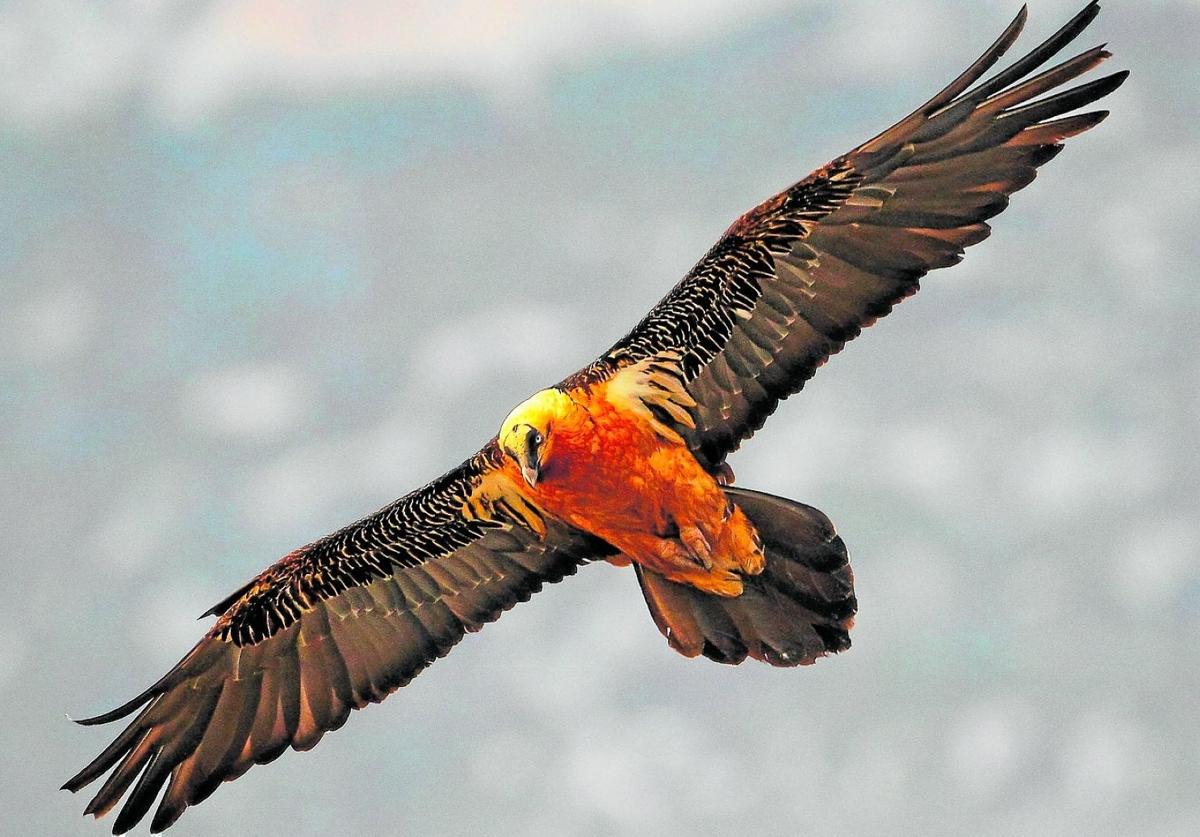Sixteen bearded vulture chicks have hatched in the wild in Andalucía since 2015
Eleven occupied breeding territories have been registered, nine in the Sierras de Cazorla, Segura y Las Villas nature reserve and two in the Sierra de Castril nature reserve
Europa Press
Thursday, 1 May 2025
A total of 16 bearded vulture chicks have hatched in the wild in Andalucía since 2015, when the first chick was born in its natural habitat. This was "a milestone in conservation", as bearded vultures had not bred freely in the region since their extinction in 1986.
This important step in reintroduction was taken with the birth of Esperanza, a female that already has a breeding territory, although she has not bred yet. In 2022 the construction of her nest began, as reported to Europa Press by the regional ministry of sustainability and environment.
The 16 chicks born in the wild in Andalucía come from different pairs of the necrophagous bird that had been released for the reintroduction of the species. Half of them have survived. Eleven occupied breeding territories have been registered, nine in the Sierras de Cazorla, Segura y Las Villas nature reserve (Jaén) and two in the Sierra de Castril nature reserve (Granada).
The reintroduction programme began in 2006 with bearded vultures bred in captivity within the framework of the European endangered species programme (EEP). Since that date, 90 birds have been released in Andalucía, born in different breeding centres linked to the European programme.
One of them is the Guadalentín bearded vulture breeding centre, located in Cazorla (Jaén). This centre is "key to the conservation of the species not only in Andalucía but across Europe, given that it is the centre that produces the largest number of chicks". In 2024, it broke the record with 11 chicks born in just one year.
Hacking
The bearded vulture reintroduction programme developed by the regional ministry aims to achieve an autonomous and stable population in the region through the release of young specimens by the 'hacking system'.
This technique, originally used in falconry, aims to ensure that the bird assimilates the area of release as its place of birth. If the assimilation is successful, the bird will return to settle and breed there. Although during their first years, they might travel a long way, when they reach breeding age - between seven and ten years - they return to their origins and settle there, "where with a bit of luck they will form a pair and have offspring".
Hacking consists of releasing the young birds into a nest set up at height in a hollow or small hollow, simulating the natural characteristics of the nests that bearded vultures build in the wild.
They are released at around 90 days old - at this stage, they still have a month before they start to fly, but they can already feed themselves. Food is deposited in their hollows through tubes so they don't have any human contact.
In the wild, a bearded vulture can live up to 40 years (much longer than that in captivity) and although they sometimes lay two eggs per nest, usually only one of chicks survives.
This year's release campaign is still pending, so the 19th campaign from 2024 is the most up-to-date. Last year's release campaign proposed the beginning of a new phase and the extension of release territories, in order to repopulate all the areas where the species was present before its extinction. Last year, seven chicks were released - four in the Cazorla, Segura y Las Villas nature reserve and three in Sierra Nevada national park.
Apart from the aforementioned nature reserves where reintroduction takes place, the species is now populating more and more territories. Bearded vultures are now frequently spotted in Sierra Nevada, Sierra Mágina, Sierras Sur de Jaén, Sierra Arana and Sierra de Huétor Santillán and in the neighbouring areas of Albacete and Murcia.
"When the movements of non-territorial vultures begin in spring, they temporarily establish themselves while travelling through the large mountain ranges throughout the Iberian peninsula. Bearded vultures have been known to reach Portugal and France, having even been recorded on one occasion crossing the Strait of Gibraltar to Africa," explained the regional ministry.
Wild population
The wild population of bearded vultures in Andalucía has been estimated at around 65. This is "a considerable figure, which increases every year thanks to the reintroduction from breeding centres and births of the wild population".
In addition to the efforts made in captive breeding, release and monitoring, "a large part of the success of the project is due to the efforts that the regional ministry has been making since 2002, when the Andalusian strategy for the eradication of the illegal use of poisoned bait came into effect".
This necrophagous bird went extinct in the 1980s, predominantly due to the use of poison.
